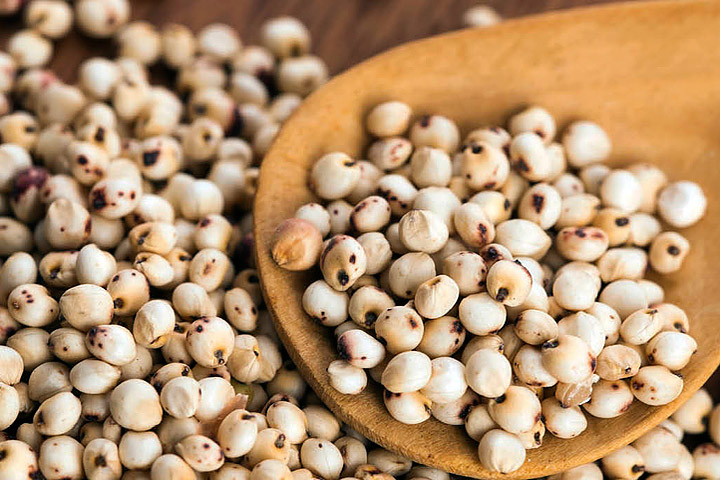
Sorghum, an ancient cereal grain that’s a staple crop in India and throughout Africa, has long been considered a safe grain alternative for people with celiac disease and gluten insensitivity. New molecular evidence confirms that sorghum is completely gluten-free, and reports that the grain provides health benefits that make it a worthy addition to any diet.
It’s unfortunate that this grain is overlooked by many western countries, as it is a nutrient powerhouse. In the United States, sorghum is mostly used as livestock feed. But this grain, which is grown in South Asia, Africa and Central America, packs a whopping 22g of protein per cup (192 grams). Perfect for human consumption!
What is Sorghum?
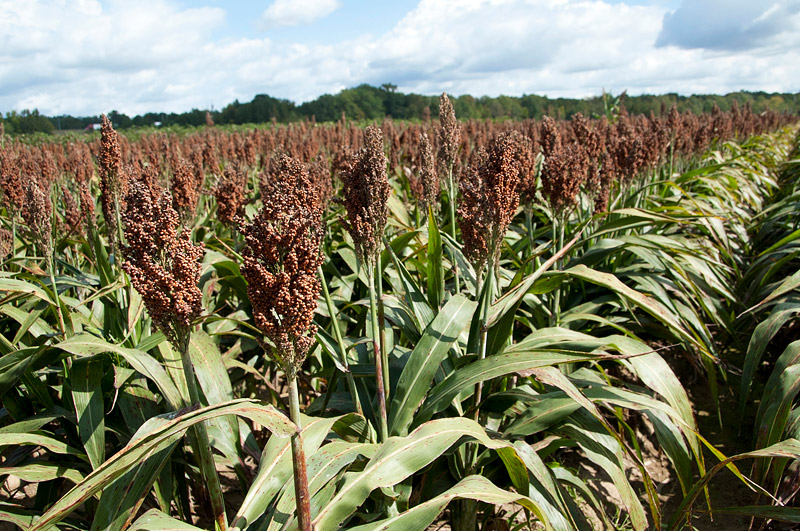
Sorghum is a cereal grain that grows tall like corn, and it is used for a lot more than just sweetening. First and foremost, in the United States, it’s used as livestock feed and turned into ethanol. It’s a popular crop to grow within the drier regions of the States because it is drought resistant. This quality has also made it a popular crop in Africa — where it has been growing for 4,000 years. Actually, sorghum is thought to have been introduced to America from Africa, making its way over on slave ships.
Sorghum is the broad term for an entire genus of grasses that are native to tropics and subtropics around the world. While there are more than 30 different species of sorghum, only one is harvested for human consumption, while the others are primarily used as fodder for animals.
The important species for humans, Sorghum bicolor, is native to Africa, but can now be found all around the world as a staple food product. It is also cultivated in many different countries. It’s primarily used in the production of sorghum molasses, sorghum syrup, and as a grain. Also, it can be used in the production of alcoholic beverages and even biofuels around the world. It is widely considered the fifth most important cereal crop in the world.
Nutritional Value
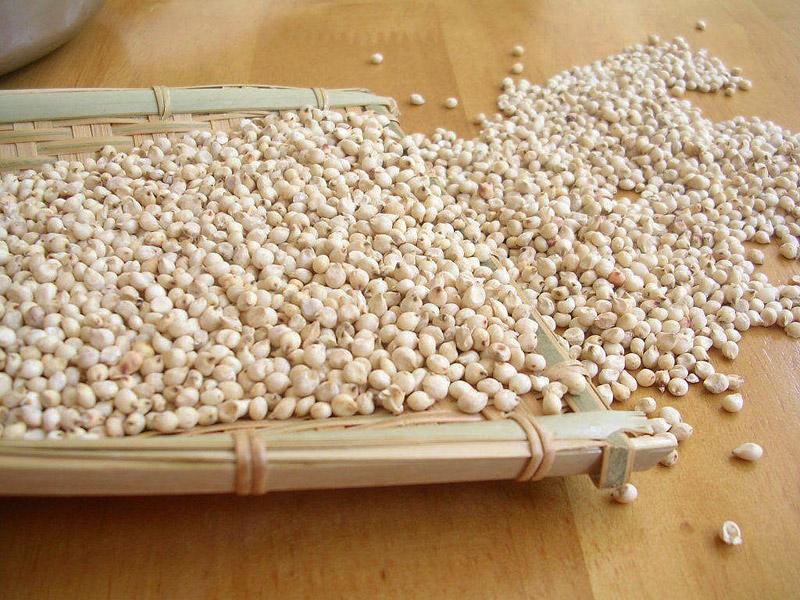
Because it’s gluten-free, sorghum grains offer a safe alternative to wheat if you follow a gluten-free diet. Consuming sorghum also boosts your nutrient intake, and the grains offer health benefits because of their impressive nutritional profile.
Sorghum is a powerhouse in terms of nutrients, and can provide those wise individuals who add it to their diet with vitamins like niacin, riboflavin, and thiamin, as well as high levels of magnesium, iron, copper, calcium, phosphorous, and potassium, as well as nearly half the daily required intake of protein and a very significant amount of dietary fiber (48% of the recommended intake).
Each serving of sorghum — a quarter-cup of dry grains — contains 163 calories. If you follow a 2,000-calorie diet, this provides approximately 8 percent of your calorie intake of for the day. It’s rich in carbohydrates — each serving contains 36 grams of total carbohydrates, including 3 grams of fiber. Because of its fiber content, sorghum promotes digestive health, and — combined with other fiber-rich foods as part of a high-fiber diet — fights cardiovascular disease and aids in blood sugar control. It also contains 1.6 grams of fat and 5.4 grams of protein per serving.
Health Benefits of Sorghum
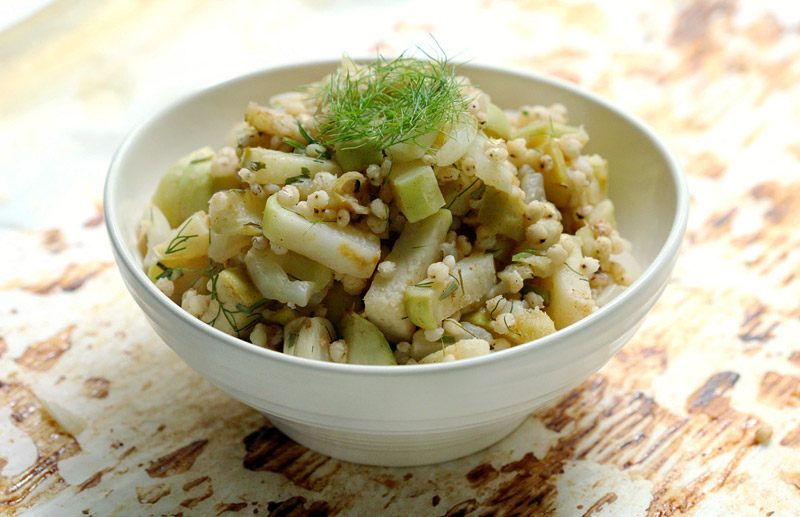
Digestive Health: It seems like many healthy foods contain some amount of dietary fiber, which greatly improves the functionality of the digestive system. However, sorghum is one of the best foods out there for dietary fiber. A single serving of sorghum contains 48% of your daily recommended intake of dietary fiber, more than 12 grams! That means that your digestive tract will keep your food moving along rapidly, preventing things like cramping, bloating, constipation, stomach aches, excess gas, and diarrhea. Furthermore, excess amounts of fiber in the body helps to scrape off dangerous cholesterol (LDL), which helps to improve heart health and protect your body from conditions like atherosclerosis, heart attacks, and strokes.
Cancer Prevention: The bran layer of the sorghum grains contain important antioxidants that are not found in many other types of food. These antioxidants have been directly connected to a reduced chance of developing various types of cancer, including esophageal cancer, particularly in comparison to people who regularly eat wheat and corn. Antioxidants are the beneficial compounds that neutralize and eliminate free radicals in the body, which often cause healthy cells in the body to mutate into cancer cells.
Diabetes Control: Excessive carbohydrates break down into simple sugars and wreak havoc on the glucose levels in the body, leading to diabetes, or causing chaos for those people who already suffer from this disease. However, the tannin-rich bran of sorghum actually has enzymes that inhibit the absorption of starch by the body, which can help to regulate insulin and glucose levels in the body. By keeping these levels balanced, diabetics won’t suffer as many plunges and spikes in their glucose levels, thereby preventing diabetic shock and other health complications.
Celiac Disease: Although it is a relatively “new” condition, it seems to be gaining awareness all around the world. Celiac disease is a severe allergy to gluten, which is primarily found in wheat-based products. Surprisingly, wheat/gluten is found in thousands of normal food items, making life for those suffering from Celiac disease very difficult. Fortunately, alternative grains and grasses, such as sorghum, can be eaten safely by those suffering from this increasingly common condition, without the painful inflammation, nausea, and gastrointestinal damage that gluten causes.
Bone Health: Magnesium is found in high quantities in sorghum, which means that your calcium levels will be properly maintained, as magnesium increases calcium absorption in the body. These two minerals are also integral to the development of bone tissue and speeds up the healing of damaged or aging bones. This can prevent conditions like osteoporosis and arthritis, thereby keeping you active and healthy well into your old age.
Circulation and Red Blood Cell Development: Copper and Iron are also found in sorghum, and in a similar way as magnesium and calcium, copper helps to increase the uptake and absorption of iron into the body. This means a decreased likelihood of developing anemia, which is another name for iron deficiency. With enough iron and copper in your system, red blood cell development is increased, thereby boosting circulation of the blood, stimulating cellular growth and repair, and increasing the hair growth of the scalp, while also boosting energy levels throughout the body. A single serving of sorghum contains 58% of your daily recommended intake of copper.
Energy Levels: Niacin, also known as vitamin B3, is a key component in transforming food into usable energy and fuel for the body. Breaking down and metabolizing nutrients into energy will keep your energy levels stable throughout the day, rather than the cheap peaks and troughs that sugar boosts give you. Sorghum contains 28% of your recommended niacin intake per day!
How to Use it?

Use sorghum flour in place of wheat flour for gluten-free baking — its mild flavor works well in breads, wraps, muffins and other baked goods. Alternatively, cook whole sorghum grains in water to use in place of other grains in recipes. Combine it with your favorite chopped veggies, fresh herbs in a lemon-juice vinaigrette for a hearty salad, toss a handful of cooked sorghum into a bowl of soup before serving, or ladle stir-fries or stews over a bed of sorghum grains, instead of rice. And that’s not all, sorghum can also be popped like popcorn!
A Final Word of Caution
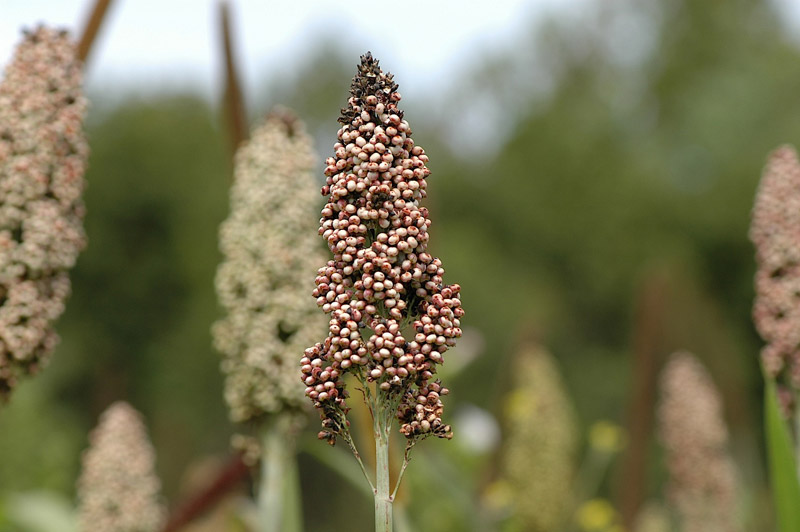
There are no known concerns or cautions against adding sorghum to your diet. As it is a grass, there is the possibility of some people being allergic to it, but the cases of sorghum being allergenic are very rare. Furthermore, with the high content of certain minerals and vitamins, the only real danger is getting too much of a good thing, so eat it in moderation and enjoy all of the wonderful health benefits!
The information on this site is not intended or implied to be a substitute for professional medical advice, diagnosis or treatment. All content, including text,graphics,images and information, contained on or available through this web site is for general information purposes only.




Leave a Reply